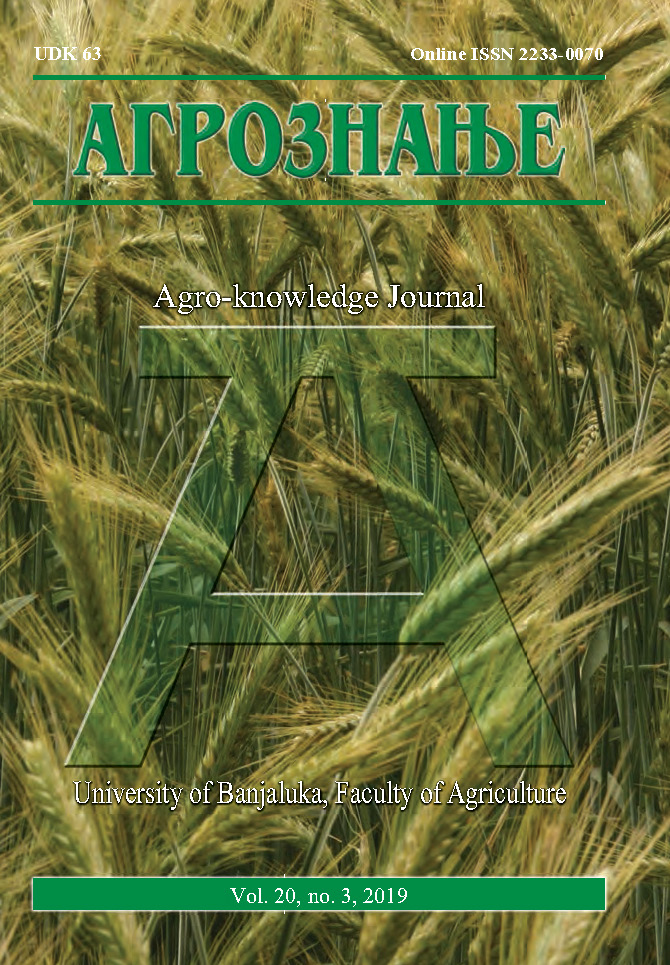Changes of Selected Egg Quality Traits Depending on the Laying Period of Semi-Intensively Raised Guinea Fowl Hens
DOI:
https://doi.org/10.7251/AGREN1903139VAbstract
The aim of this study was to evaluate selected egg quality traits depending on the laying period of pearl grey guinea fowl hens reared in semi-intensive system. In each of three evaluation terms (the second, fourth and sixth month of laying period) 40 eggs were collected, with the total of 120 eggs were used for quality evaluation. Methods of descriptive analysis and one-way ANOVA were used for data analysis. Overall values of three evaluation terms for egg weight, shell thickness, yolk to albumen ratio, Haugh units and yolk colour were 40.63 ± 0.27 g, 0.50 ± 0.01 mm, 0.58 ± 0.01, 75.37 ± 0.41 and 12.74 ± 0.11, respectively, whereas overall values of shell, albumen and yolk proportion were 15.32 ± 0.15, 53.75 ± 0.16 and 30.94 ± 0.17%, respectively. Significant differences were found for values of egg quality traits depending on the laying period, but the average value was generally comparable with literature data reported for similar rearing conditions for this Guinea fowl variety.Downloads
Published
2019-12-31
Issue
Section
Articles

